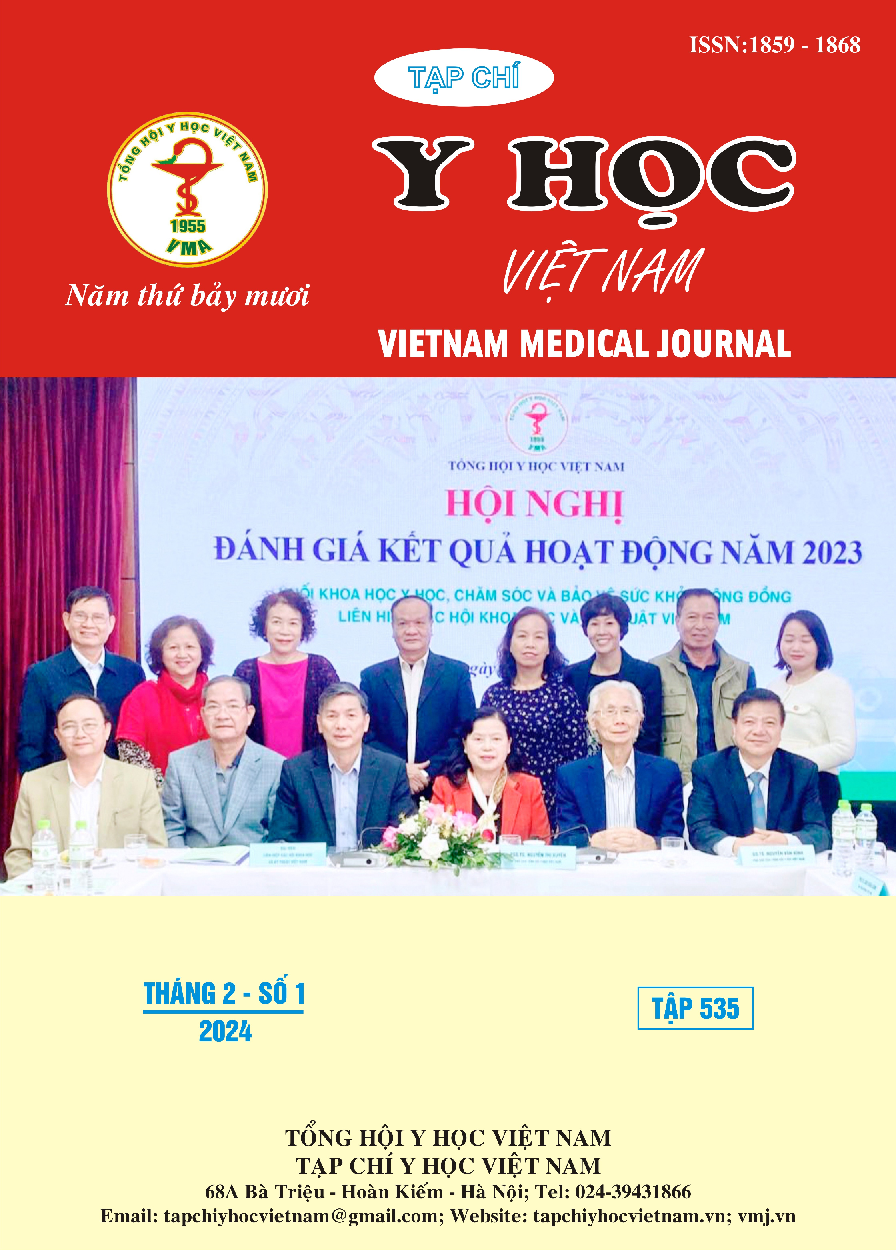OPTIMIZING THE NEWBORN SCREENING PROCESS FOR GALACTOSEMIA
Main Article Content
Abstract
Galactosemia is an inborn metabolic disorder characterized by a deficiency of enzymes in the galactose metabolic pathway. Consequently, the patients with galctosemia are unable to convert galactose in milk into glucose, resulting in an energy deficiency that can lead to serious health, intellectual, and even life-threatening consequences, particularly after consuming breast milk or regular formula. Galactosemia is an autosomal recessive genetic disorder. The disease is classified based on gene mutations, with the most common being classic galactosemia, caused by mutations in the GALT gene, leading to a deficiency of the enzyme galactose-1-phosphate uridyl transferase (GALT). Despite the severe consequences it can bring, the disease can be detected shortly after birth through quantitative enzyme activity analysis of GALT in dried blood spot. In this study, we have determined the mean and distribution of GALT activity, established a screening procedure to optimize the efficiency of screening by conducting a second analysis (a weeks after the first sample collection) for high-risk tests from the initial screening. Results from 11,937 newborns in Ninh Binh Province showed that there were 11 high-risk results in the first round of testing, accounting for a rate of 1/1,085. The second round of testing for these high-risk patients revealed that six of them had normal GALT activity, while five remained at high risk, constituting a rate of 1/2,387. After diagnosing 11 high-risk cases, one was truly positive, and ongoing clinical monitoring has shown no false-negative cases to date. Therefore, the specificity of the first-round blood spot screening method was 99,91%, while the second round achieved 99,97%. The sensitivity, negative predictive value for the first round was 100%, and the positive predictive value was 9,1%, whereas in the second round, it was 20,0%. The results of this study contribute to improving the evaluations of the newborn screening program, enhancing screening efficiency, reducing the number of false positives, and optimizing the economic and societal resources associated with diagnostic testing."
Article Details
References
2. Succoio M, Sacchettini R, Rossi A, Parenti G, Ruoppolo M. Galactosemia: Biochemistry, Molecular Genetics, Newborn Screening, and Treatment. Biomolecules. 2022;12(7):968.
3. Hoàng Thị Liên Châu, Trần Thị Hoàn, Hoàng Thị Bích Ngọc, Nguyễn Thị Tịnh Hiếu, Trần Thị Lệ Hà. Tình hình sàng lọc sơ sinh bằng phương pháp lấy máu gót chân tại Bệnh viện Trung ương Huế. Tạp chí Phụ sản. 2019;16(04):79-82.
4. Lưu Vũ Dũng, Nguyễn Cao Hà Phương, Vũ Văn Tâm. Chương trình sàng lọc sơ sinh tại Bệnh viện Phụ sản Hải Phòng. Tạp chí y học Thành phố Hồ Chí Minh. 2019;23(4):226-230.
5. Ngô Thị Bình Minh, Phạm Thanh Long, Lê Minh Khôi, Nguyễn Thị Băng Sương, Nguyễn Hoàng Bắc. Nghiên cứu khảo sát tỉ lệ bất thường của xét nghiệm sàng lọc sơ sinh tại Bệnh viện Đại học Y dược thành phố Hồ Chí Minh. Tạp chí Y học TP Hồ Chí Minh. 2021;2(25):157-162
6. Tăng Xuân Hải, Nguyễn Thị Vân, Nguyễn Thị Thơ Mây, Nguyễn Sỹ Tuấn Anh. Đánh giá kết quả sàng lọc sơ sinh bằng phương pháp lấy máu gót chân tại Bệnh viện Sản nhi Nghệ An từ 01/1/2022 – 30/6/2022. Tạp Chí Y học Cộng đồng. 2022;63 (Chuyên đề 3-HN Sản Nhi Nghệ An).
7. Y. G. D. R. Van Hoa Ho, Expected Benefits and Challenges of Using Economic Evaluations to Make Decisions About the Content of Newborn Screening Programs in Vietnam: A Scoping Review of the Literature. JIEMS, vol. 11, p. e20220011, 2023.
8. Cohen AS, Baurek M, Lund AM, Dunø M, Hougaard DM. Including Classical Galactosaemia in the Expanded Newborn Screening Panel Using Tandem Mass Spectrometry for Galactose-1-Phosphate. Int J Neonatal Screen. 2019 May 4.


